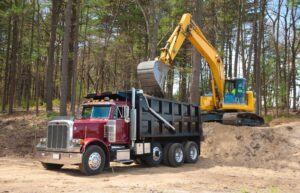We often take for granted how far we’ve come when it comes to construction. Heavy equipment and machinery make the process of construction so much more efficient compared to even just 50 years ago with all the innovations and technological advancements improving each part of the building process as well. One of the most important steps in any construction project is excavation and earth moving.
Below, we break down this particular step, what’s involved in it, and what tools are used to complete it quickly.
Excavations and Earth Moving: Why Are They Important to Do?
No construction will last very long if it’s built on top of a poor foundation. This is what the excavation and earth moving step in construction aims to solve. By strategically moving and shaping the earth, buildings and structures can be built upon foundations that will last for years to come.
Interesting Facts About Excavations and Earth Moving
There’s more to excavation than meets the eye though. For instance, the reason many builds can take longer than expected to complete is due to the weather. Since moving dirt is at the core of this step if the dirt can’t be moved – like when the ground is frozen – then little progress can be made. The same is true (although to a lesser extent) if the ground is wet as the mud that’s formed can slow down progress.
Efficiency is also of paramount importance when it comes to earth-moving. For example, it’s critical to avoid handling the material more than necessary and to make sure to not over-dig or under-dig. All of the new machines on the market are equipped with GPS, which can communicate with the engineer’s design ensuring the excavation goes exactly as planned.
You also may have seen some heavy machinery, but you likely haven’t seen one of every kind at a construction site. That’s because each job site is different and while a piece of equipment like a backhoe may be incredibly useful for getting an area excavated in a tighter place, an excavator is going to be able to move much more earth in a larger area.

What Heavy Equipment Is Used for Excavations and Earth Moving?
Typically, the most common kinds of heavy equipment you’ll see for excavations and earth moving are the following.
Excavators
Excavators are one of the core machines used for moving dirt. Typically on tracks, a conventional excavator has a long bucket arm attached to a pivoting cab that can rotate a full 360 degrees.
They’re seen everywhere because of their ability to not only move a lot of earth quickly but also because their bucket attachment can be easily swapped out for other types of attachments for specialty work.
Compaction Equipment
Another “must have” type of equipment is compaction equipment. Typically the contractor must meet very specific compaction tolerances on a job before they can continue. This is called the Proctor Density Scale, of which 98% compaction is usually required for most jobs. The most common method is to wet and roll the material with a vibrating drum; however, compactors can be easily mounted to excavators, run remotely in a trench, or even operated by hand like a lawnmower to meet the right tolerance.
Backhoes
Similar in design to a farm tractor, backhoes have an adjustable shovel in front and a small bucket in the back for digging. A step down from excavators in terms of scale, backhoe loaders are often used for smaller jobs and are capable of working in tight, limited space to perform various operations. These operations include moving dirt, backfilling excavations, digging holes and trenches, and placing pipes and other materials.
One of the biggest advantages of backhoes is that they have wheels so they can be driven on roads to urban worksites.
Graders
You’ve probably seen a grader if you’ve seen road construction. Graders are typically used to fine-grade dirt or gravel roads or to prepare the road base course before placing asphalt. Graders can also be used to create sloped surfaces or drainage ditches with shallow V-shaped cross-sections.
Dump Trucks
Finally, dump trucks are needed on almost every large job site. Road-ready, these vehicles can quickly bring material into or out of a worksite and can travel anywhere large equipment is permitted.
They come in many different sizes for different capacities and load needs, but the most common ones are 3-axle ones that have a container on the rear that can be lifted up to dump out materials.
Overall, earth moving and excavations are one of the most crucial steps in the construction process that features many useful machines to get the job done.
